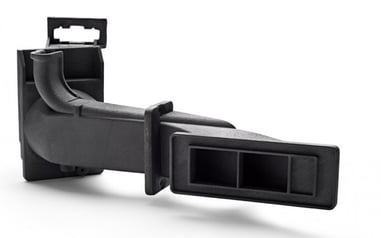If you’ve relied on traditional manufacturing methods like CNC machining for prototypes in the past, you’re probably used to getting 1-2 iterations per design cycle. Since each unique part requires new programming and setup for a machine shop, additional iterations are treated separately and carry additional costs.
With industrial 3D printing, the process works a little differently—and much to the customers’ advantage. Because 3D printers can include several iterations in one build, you have the option of creating 5-6 unique prototypes for the same price you’d pay to get the same number of identical parts.
At RE3DTECH, we believe there’s immense value in testing several unique prototypes. That’s why we give our customers the opportunity to design multiple iterations in the same design cycle.
The Standard Design Cycle for 3D Printed Prototypes
Design iteration for a new product (or a revamped version of an existing product) for 3D printed prototypes takes as little as 6 months. That timeline can be slightly extended if the prototype is for a heavily regulated market like medical, automotive, or aerospace.
The standard design cycle looks something like this:
- At the 2 month mark, the customer receives an initial prototype, usually consisting of 5-10 pieces of a single design. The prototype goes through basic testing to identify areas for improvement. Customers are generally receptive to design feedback from their 3D printing partner during this phase.
- At the 3-4 month mark, assuming the part functions as intended, the customer begins locking down the design. They move forward with making 100-200 units. From there, they conduct additional testing—both in the lab and in real-world settings.
- At the 4-5 month mark, the customer locks the design down completely, secures production pricing, and gets their quality team involved.
- At the 6 month mark, the customer moves forward into full production. There are no further design changes at this point.

While the full prototyping process may take 6 months, engineers and their 3D printing partners usually only have a few weeks to explore iterating on their design. The bulk of the timeline is dedicated to building out and testing just one part design.
That’s why there’s immense value in being able to test and optimize 5-6 unique prototypes during a single prototype development process. Rather than resetting the clock, 3D printing allows you to run through several design cycles simultaneously.
The Value of Getting 5-6 Unique Prototypes from One Design Cycle
Still not sold on the value of getting multiple unique prototypes from one design cycle? We’re happy to share more of our design and manufacturing philosophy with you! Think about it this way:
Due to inevitable project constraints like budget and timing, engineering is less about coming up with an objectively defined best design and more about coming up with the best design for the desired cost and lead time.
There’s always more than one right way to design a part, however, some designs are certainly better than others. Designing 5-6 unique prototypes instead of just one increases the odds of finding the ideal way to make a part before moving into production.
Sure, this approach can be disruptive—especially for large organizations that have a standardized system for revision control. But it’s important to remember that true innovation always requires stepping outside of the status quo.
Ready to gain design freedom and stop settling for parts that are just good enough?
Request a quote from RE3DTECH today for your next 3D printing prototype!
